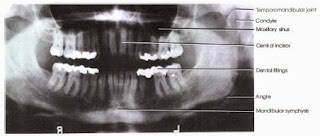What is Temporomadibular Joint?
The TMJ is forms by two joints in the jaw and aticulates to each other, the madibular fossa recieves the condyles of mandible and this articulation is called the Temporomandibular joint (TMJ).
TMJ is a synovial type joint (a joint that is movable type and it is common in mammals) because both hinge type and gliding joint type is present.
Temporomadibular Disorders and Diagnosis:
The common disorder of TMJ is the temporomandibular syndrome is a dysfunction of the TM joint. Some others are Arthritis, Erosions, Painful joint due to habitual clenching of the teeth and inborn abnormalities at birth.
Radiographic examinations and other machines in radiology is the common diagnostic medium for its diagnosis.
TMJ X-Ray (Temporomandibular Joint)
A radiographic examination with the use of ionizing radiation produced by the x ray machines and stores the image in a radiographic film. These are some projection and Methods use when taking TMJ.
Panoramic Tomography, Pan Tomography and Rotational Tomography
 |
| Panoramic Tomogram Temporomandibular Joint is Demonstrated |
It provides an image of entire mandible including lateral view free of superimposition and termed use to designate the technique employed to produce a tomogram of curve body parts. It is also the most comfortable way for patient who also suffer in severe mandibular or TMJ trauma before and after splint wiring of the teeth application, but must be first taken with conventionsal radiographs in AP, PA or a verticosubmental views to constitute fragment position. This technique is very useful for general survey study of various dental abnormalities and become a add-on to on conventional periapical radiographs rather than replacing it.
Symptoms:
Symptoms of TMJ is depending on disorder happen to patient, Usually pain in the jaw and muscle pain located beneath the jaws are the most common symptoms. Some symptoms are pain in neck, painful movement of jaw, clicking sounds when opening and closing mouth and for severe cases locking of jaws are possible.
Common Treatments:
Avoiding highly movements of joints, eating soft foods and applying cold compress to affected area are home remedies treatment that is effective to relief its pain. When pain becomes worsen seek for a specialist/doctor (orthodontist) advice and ask for other options in treatment.
Pain releiver,
Surgery,
TMJ exercise,
Splints, and possible
TMJ implants are the usual recommendation of physician.
Nightguards / Mouthguards
Is a stabilization splints that a doctor will recommend for oral appliance, stabilization splints or bite guard is the common name, it is widely used for treating TMJ disorder. And It is made of plastic that guards and fits into the upper or lower teeth. If symptoms continues or worsen tell your doctor immediately may other treatment is needed in addition to splint.









No comments:
Post a Comment